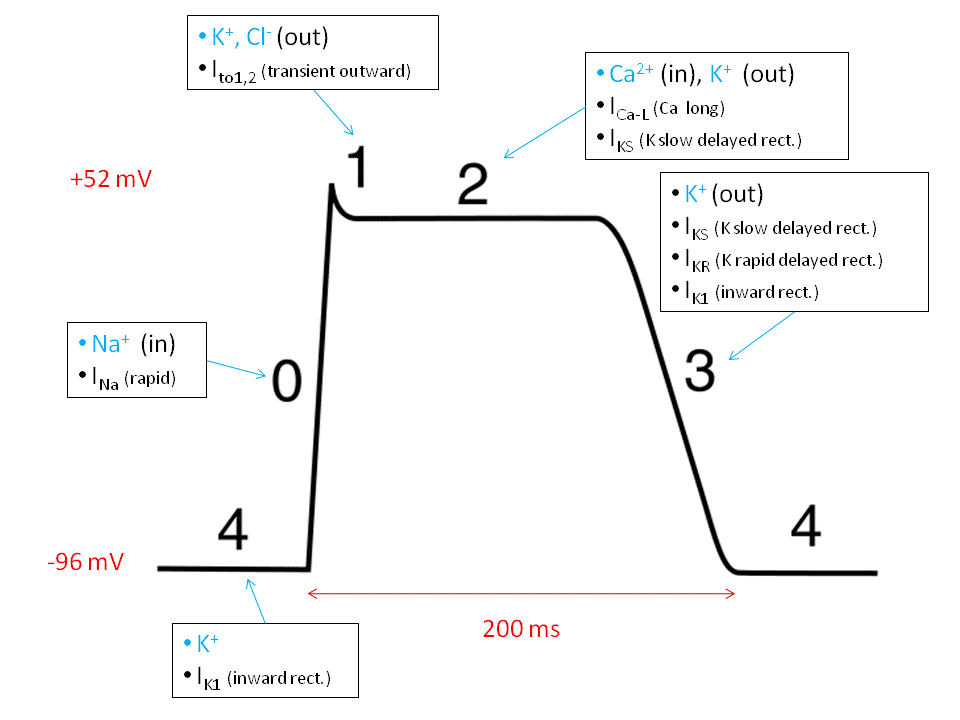In May 2020, I experienced my first symptoms with what I now believe to be thiamine deficiency (beriberi). I believe other nutrient deficiencies played a role as well. This was preceded by an especially difficult several months that included a marital separation and possible COVID infection. In addition, I experienced a mild head injury during this time when my son and I accidentally collided while picking up toys together. I have a history of traumatic brain injury, so am susceptible to post-concussive syndrome from mild head trauma.
It was these factors that precipitated the downward health spiral that first began in May 2020 when I was 38 years old. Prior to this time in life, I felt my health to be good. I had gone through some very challenging mental health struggles in the past, a TBI and post-concussive syndrome, as well as a few other issues related to physical health, but for the most part, I would have considered myself to be a fit, healthy, and resilient person. I consumed a paleo diet, which I thought very nutritionally dense, and I exercised regularly. However, looking back on my history suggests risks for thiamine deficiency. Here are some factors that are part of my overall health history:
- Five pregnancies and nine years of breastfeeding with very little multivitamin supplementation
- Former short-term fruitarian and vegan diets for purposes of detoxification
- Former sporadic heavy binge drinking from age 15 to 33
- Former tobacco smoker from age 15 to 33
- Consumed extreme amounts of candy as a child
- Overdosed on pills three times between ages 15 and 17. The third overdose involved Serzone, which has a warning for liver damage
- Was prescribed antibiotics at least 75 times from age 5 to 33 for chronic UTIs and bronchitis
- Prior health problems: chronic urinary tract and kidney infections as a child and young adult, chronic bronchitis as a child, candida overgrowth, digestive problems, insomnia, anxiety, depression, PTSD, and depersonalization disorder
In May, the combination of stressors, along with likely longstanding nutrient deficiencies, precipitated a rapid downward spiral leading to multiple hospitalizations, and ultimately, what I believe was severe thiamine deficiency. At its worst, I believe I was headed toward Wernicke’s encephalopathy and heart failure. Since the best physicians could offer was Ativan, antidepressants, and a presumed multiple sclerosis diagnosis (despite a lack of evidence), it was up to me to save myself, particularly because I am a parent to five children. Through extensive internet research, I learned about thiamine deficiency and began to treat myself. This is my story.
Rapidly Disintegrating Nerve Function
The first symptom I remember experiencing was a strange tingling in the center of my chest upon standing. The next symptom was flank pain. I thought perhaps I had a kidney stone and made an appointment with my primary care. During this time, I was also intensely tired in a way I’d never been before, very pale, anxious, uncharacteristically irritable, shaky, short of breath, thirsty, lost weight, and became sweaty at random times.
At the appointment with my primary care, it was decided I would get an ultrasound of my kidneys to check for kidney stones. I didn’t make it to the ultrasound appointment because that same day I stood up after a nap and experienced sudden debilitating chest pain that felt like I was having a heart attack. It started in the area of my heart and moved to my left arm and up to the left side of my neck. I called an ambulance and was taken to the emergency room. They ruled out a heart attack and proceeded with the kidney ultrasound after I shared with them the other strange symptoms I’d been experiencing. Nothing of significance was found on the ultrasound, and I was sent home.
Shortly after that incident, I started experiencing numbness in my legs at random times during the day and night, as if they’d fallen asleep. I went into the ER again after a particularly intense experience of numbness where I felt uneasy about even standing to walk. Again, nothing was found, and I was sent home. My arms began to go numb at night while in bed, in addition to my legs. I’d wake up to this numbness, and shortly thereafter I could feel the numb sensation in my head as well.
I began to experience gastroparesis, and my intestinal motility seemed frozen at times but then would go into overdrive during the night, requiring urgent bowel movements in the middle of the night, which was not normal for me. At the same time, I could feel the sudden rapid digestive motility, I could also feel the blood flow dropping from my brain. As soon as I’d have a bowel movement, the blood flow would return to my brain. These sensations were all so strange and unnerving and unlike anything I’d previously experienced in life.
Loss of Consciousness, Compromised Speech, and Vision Changes
I went to an acupuncture appointment and shared with the practitioner what was happening. She treated me for yin deficiency. That night I woke to use the bathroom, and on the way back to my bedroom, I nearly lost consciousness for the first time. It was a terrifying experience. My ability to speak was compromised, and I tried to communicate to my daughter what was happening, but my voice was in slow motion. My vision was growing tunnel-like and dark. I thought I was having a stroke. My daughter gave me my phone, and I called an ambulance and was able to very slowly articulate what was happening as I lay on the floor, wondering if I was going to die. I was taken on a stretcher to the ER, and the diagnosis from that trip was that I’d had a panic attack. I was given Ativan and sent home. I knew that a panic attack was not the correct explanation, although I was indeed in a state of panic over my current health. I felt very strange, with strange sensations throughout my body and brain, severe anxiety, erratic heartbeats, and tachycardia.
Things grew progressively worse over the next couple days, and my mother drove me to a better hospital four hours away to hopefully get answers. By the time we arrived, I could not walk due to the total body numbness. I was given a neurological exam and had no reflexes in my knees, ankles, and feet. I was then given two bags of IV saline and felt relatively normal a few hours later. Many labs were done, but no nutrient levels were checked. I was kept overnight and examined by a neurologist, but I wasn’t experiencing symptoms during the exam. It was found that my blood sugar was abnormally low during the night (65), and I was told to improve my nutrition and sent home with no real answers.
Was it B12 Deficiency?
I started taking a B complex and multivitamin and tried to eat as healthy as possible, but during the following weeks, I continued to experience near syncope, dizziness, cardiac and GI issues, strange body sensations, and severe anxiety. I’d have pockets of time where I felt relatively normal, but symptoms always returned, and night numbness was a regular occurrence. I often felt ataxic, like I was about to lose my balance or fall. My hearing seemed to change, and my right eyelid began to twitch relentlessly. Nerve pain began in my joint junctions and felt like sparking, electrical, stinging sensations. Over the course of several days, these nerve pains began to affect the base of my spine and slowly moved up my spine to my head. It was a very painful and frightening experience.
When researching symptoms, I came across information about B12 deficiency and wondered if that is what I was dealing with, so I asked my naturopath if he would prescribe methylcobalamin that I could inject at home, and I began daily B12 injections. The nerve pain resolved after a few weeks, which was a tremendous relief. As a result of this resolution, I believed a B12 deficiency to be at the root of my problems. I continued with B12 injections after the nerve pain healed but dropped down to once weekly injections.
Another Hit to My System
Shortly after the nerve pain resolved, I got very sick with a Campylobacter infection. It was strange because no one else in my family got sick, and we’d all been eating the same meals. I went to the ER after several days of relentless diarrhea and high fever. I was given fluids and my stool was tested, which revealed the Campylobacter bacteria, and I was prescribed azithromycin. In hindsight, I wish I’d not taken the antibiotic because I believe it made my condition worse.
After the antibiotic, I felt like I was in a permanent state of semi-consciousness. I felt hypoxic, like I was being asphyxiated. When I’d start to fall asleep, I’d wake up with a jolt because it felt as though I were falling and losing blood flow to my brain. I had constant high-pitched ringing in my ears. Life became a total nightmare. My arms and legs were swirling with strange sensations I’d never felt before – paresthesias and cramping muscles. My heart was in a near constant state of palpitations with alternating bradycardia and tachycardia. When I’d roll from one side to the other in bed or stand up, my heart rate would go from 40s and 50s to 120s and 130s. It felt like my heart was constantly pounding, no matter if the rate was slow or fast. The sound was audible to me day and night, and the pounding seemed to shake my entire body. Sometimes it felt like my heart would stop for an abnormally long amount of time, then sluggishly start thumping again. I would wake up in extreme pain on whichever side I slept on. I recall using my finger oximeter one night and getting a reading of 84% oxygenation.
Maybe Multiple Sclerosis?
During this time, several doctors suggested I might have Multiple Sclerosis (MS). I had an MRI of my brain that showed no lesions, so MS was ruled out. I was eventually diagnosed with POTS by the medical community. I researched POTS and saw that extra salt was often helpful for minimizing dizziness, so I started adding salt and electrolytes to my water. It did seem to help some, so I began drinking about a gallon of water a day with 2-3 extra teaspoons of Celtic or Pink Himalayan salt and added electrolytes.
In late September 2020, my POTS symptoms resolved. My heart had normalized, and I was no longer dizzy or experiencing near syncope, but I was left with “stocking and glove” peripheral neuropathy. I had numbness from my feet up to my calves and numbness in my hands and forearms. I was relieved that the POTS symptoms were gone and felt I could tolerate the numbness and paresthesias. I still felt very weak and struggled with bacterial infections in my ears and sinuses as well as cold intolerance.
Discovering Thiamine Deficiency
Life continued this way until early November, when I decided to try R-Lipoic acid for the peripheral neuropathy and occasional spinal pain and tingling that periodically occurred. This was a devastating mistake. I ingested the first capsule in the morning and second in the evening, and within an hour of the second capsule, nerves all over my body felt like they were on fire. The only thing I’d changed that day was the lipoic acid, so I started researching contraindications to lipoic acid online and found that thiamine deficiency was a contraindication. Lipoic acid and thiamine work in tandem in the Krebs cycle, so by adding one with a deficiency of the other, it creates a draw on an already almost empty tank. In one study, when thiamine deficient rats were administered alpha lipoic acid, it created a toxic reaction. Unknowingly, I’d taken a supplement that made my situation go from difficult to much worse.
I then looked up thiamine deficiency symptoms and recognized my experience immediately in beriberi disease. I found the website, Hormones Matter, run by Dr. Derrick Lonsdale and Dr. Chandler Marrs. I began reading through the information and stories, and my belief that thiamine deficiency was the root of my problems grew stronger. Dr. Lonsdale suggests using a type of thiamine called Allithiamine (thiamine tetrahydrofurfuryl disulfide), as it crosses the blood brain barrier superior to other forms of thiamine. I ordered a bottle and took a large dose of thiamine hydrochloride I had on hand before going to bed.
I didn’t sleep well that night. My nervous system felt like it had been severely damaged. I was shaking, my heart was once again beating erratically with tachycardia upon movement. The nerve pain was intense and spread throughout my entire body. The next day, I went for a short walk and nearly blacked out. The muscles in my legs were painfully cramping. I had no energy. I couldn’t even read. I went to bed that night feeling like I had a head injury.
Each day was progressively worse. I was taking thiamine hydrochloride and benfotiamine every couple of hours, but it didn’t seem to be stopping the downward spiral of symptoms. I felt like I was going to collapse. My brain was not functioning well. I was nauseous and had severe GI distress. All the symptoms I had experienced before, in addition to many new symptoms, manifested again in rapid succession. I went into the ER and attempted to explain that I believed I had a severe thiamine deficiency, hoping I would be given IV thiamine, but I was only handed a thiamine tablet, given some IV fluids and sent home.
Five days went by, and the Allithiamine arrived in the mail. By this point, I was vomiting, could barely walk, and felt like I had a traumatic brain injury. I took one 50 mg capsule and felt relief of the extreme brain injury sensations within half an hour. Encouraged, I continued to take a 50 mg capsule each time I would start to decline. The nerve pain lessened, I stopped vomiting, and my heart rate somewhat normalized, but the most profound effect of the Allithiamine was in reducing the intense brain injury sensation.
I’ve experimented with dosage and arrived at 100 mg every two waking hours being the most effective for keeping most symptoms at bay. In addition to the 100 mg of Allithiamine, I also take 150 mg benfotiamine and 50 mg magnesium glycinate every two hours, a daily high dose B complex, multivitamin, phosphatidylcholine, ubiquinol, digestive enzymes, probiotics, and fish oil. Five weeks out from taking lipoic acid, I still experience constant moderate nerve pains all over my body, problems with bacteria (eye infections, ear pain, sinus infections, sore throat), mild tachycardia upon sudden movement, pounding heart, random sweating, high fasting blood glucose (between 110 and 120), shakiness, dizziness, anxiety, weakness, and exercise and cold intolerance. The Allithiamine and benfotiamine have improved my brain function, nerve pain and paresthesias (from severe to moderate), digestion, and my ability to sleep, and I’m hopeful that with time I’ll see more improvements.
Recovering But Disillusioned With Modern Medicine
I believe the work of Dr. Chandler Marrs and Dr. Derrick Lonsdale and supplementing with Allithiamine saved my life. I believe I was headed toward Wernicke’s encephalopathy or high output heart failure before taking Allithiamine. My quality of life is currently very poor, but I have hope that recovery from beriberi and mitochondrial damage is possible. Some damage may be permanent, but I see small improvement each day, which indicates to me that more improvement is possible.
I wish so much I’d found the Hormones Matter website earlier in the course of my disease, as I’m certain things could have been more easily reversed. I hope that others might benefit from my story and avoid the horrendous decline that I experienced. Just by taking such a simple nutrient as vitamin B1, so many devastating health consequence can be avoided. Why don’t more doctors have awareness of this?
I am disillusioned with the medical community in not identifying my illness despite dozens of trips to the ER with comprehensive symptom lists in hand and visits to internists, cardiologists, and neurologists with detailed descriptions of my ailments. No one ever checked my nutrient status beyond vitamin D, iron, and zinc levels, and B12 and folate at my request. I was treated as though I had an anxiety disorder and offered anxiety medication and antidepressants.
How is it that in 2020, the only thing that comes to mind for the medical community when presented with complex neurological symptoms is MS? Time and time again, I was told I likely had MS, but my MRI clearly showed I did not. Beriberi is a well-documented condition that’s been known for hundreds of years, yet the medical community doesn’t consider it other than Wernicke’s encephalopathy in alcoholics. I hope this can change. Awareness needs to grow. I know there must be many others who have experienced similar symptoms to my own and sought help. We deserve better medical care in what is supposed to be among the most technologically advanced countries in the world. Until and unless things change, websites like Hormones Matter serve as beacons of hope. I am profoundly grateful to the work of Dr. Chandler Marrs and Dr. Derrick Lonsdale.
We Need Your Help
More people than ever are reading Hormones Matter, a testament to the need for independent voices in health and medicine. We are not funded and accept limited advertising. Unlike many health sites, we don’t force you to purchase a subscription. We believe health information should be open to all. If you read Hormones Matter, like it, please help support it. Contribute now.


































